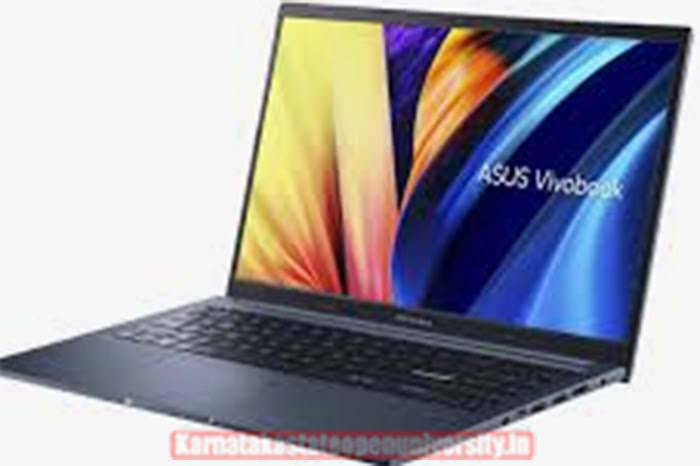ASUS Vivobook 15 Review: The ASUS Vivobook 15, equipped with Intel’s Core 120U processor, is a prime example of a gadget that prioritizes practicality over style. In contrast to ASUS’s glamorous ZenBooks, the Vivobook boasts a straightforward and functional design.
Despite its simplicity, this laptop houses a competent processor that delivers solid performance even when handling heavy workloads. When considering the ASUS Vivobook 15, priced at Rs 49,999 in India, it’s essential to weigh its notable features and potential limitations.
ASUS Vivobook 15 Review 2024
The device’s affordability coupled with its reliable performance makes it an attractive option for users seeking functionality without compromising on quality. However, prospective buyers should also assess whether the Vivobook meets their specific requirements and if its specifications align with their usage patterns.
In essence, the ASUS Vivobook 15 presents a compelling proposition for individuals in search of a dependable laptop that offers a balance between performance and value for money. By evaluating its features against personal needs and preferences, consumers can determine whether the device justifies its price point and fulfills their expectations.

ASUS Vivobook 15 Review Details
| Article Name | ASUS Vivobook 15 Review |
| Category | Tech Reviews |
| Official Website | www.asus.com |
See this: Vivo T3 5G Review
Design And Display
ASUS’ VivoBook is more suitable for an office environment than the red carpet due to its modest appearance. Despite its elegant silver finish and the distinctive embossed ASUS VivoBook logo on its monolithic body, the laptop’s plastic construction feels less impressive compared to rivals like the IdeaPad Slim 5i, which features a metal chassis. The lid and keyboard deck exhibit significant flexibility, and the rubberized legs underneath, though enhancing airflow, were uncomfortable on the lap while using the device on the move. It seems ASUS could have implemented a better design strategy in this aspect. Notably, the VivoBook 15 is equipped with a MIL-STD-810H military-grade rating, significantly boosting its durability.
Despite not having dropped the laptop while using it, I’ve heard positive feedback about ASUS’ durable notebooks. This information should reassure potential buyers. Additionally, the laptop comes equipped with various ports, such as USB 2.0 Type-A, USB 3.2 Gen 1 Type-A (two ports), 3.5mm combo jack, USB 3.2 Gen-1 Type-C, and HDMI 1.4.
While constructed with plastic, the ASUS Vivobook 15 weighs 1.7 kg, which adds to its bulkiness. In contrast to certain 15-inch notebooks with a more compact design, the Vivobook 15 maintains a traditional layout and includes a separate numpad. It’s important to mention that this device lacks a fingerprint sensor or an IR camera, requiring users to log in using traditional methods.
The laptop’s display is functional but lacks impressive features. It has a 15.6-inch screen with Full HD resolution and a 60Hz refresh rate. However, the peak brightness is only 250 nits, which makes it appear dim in brighter settings. The viewing angles are not ideal, and there is a noticeable color shift when looking at the screen from the side. Additionally, there is visible backlight bleeding. While suitable for work tasks, the display is not optimal for multimedia consumption.
Keyboard, Trackpad, and Webcam
I cannot stress enough how vital a laptop’s keyboard is for my productivity. A comfortable keyboard is essential as I type extensively every week. The ASUS Vivobook 15 stands out for its impressive backlit LED keyboard with well-spaced keys that provide good travel and a satisfying feel.
The laptop’s trackpad is slightly undersized (pun not intended), and it is slightly off-center. While it may require some adjustment, it provides a sleek surface and enables multi-finger gestures. The webcam is functional as well, delivering decent 720P quality suitable for on-the-go Zoom meetings. It also includes a privacy shutter for enhanced security.
Check Here: OPPO Find X7 Ultra Review:
Performance And Upgradeability
As a result, the processor’s performance surpasses that of last year’s U-series processor (1335U) and competes closely, if not exceeds, a similar 13th Gen H-series chipset (13420H, for example). Nevertheless, it falls short compared to the latest Core Ultra processors such as the Core 5 Ultra 125H and the Core 7 Ultra 155U. It is worth mentioning that, unlike Intel’s Core Ultra ‘H’ series, the Core 5 120U does not come with Intel’s high-performance Arc-integrated graphics.
Conclusion
The ASUS Vivobook 15 sacrifices some features to maintain an affordable price point. Although its screen lacks vibrancy and its aesthetics could be improved with higher-quality materials and vibrant colors, its performance rivals that of much pricier laptops. The Vivobook 15 is clearly aimed at individuals seeking excellent value for their money.
I always recommend that budget-conscious shoppers focus on a laptop’s performance, as it can significantly impact their overall experience. Other features can be upgraded later with accessories. Despite some flaws, I give the Vivobook 15 a positive review.
Pros:
- Good performer
- Spacious keyboard deck with a dedicated Numpad
- MIL-STD-810H rated
- Lots of ports
Cons:
- Display could’ve been better
- Bulky
- Average battery backup
ASUS Vivobook 15 Review FAQ’S
Is the ASUS VivoBook 15 good or not?
Asus has done a good job with the build quality.
Why is my Asus Vivobook 15 so slow?
Check for malware and viruses using antivirus software.
Is Asus Vivobook S 15 good?
The ASUS Vivobook S 15 OLED receives praise for its excellent screen, impressive audio, strong connectivity, and great portability.
Related Post:
Final Fantasy 7 Rebirth Review: